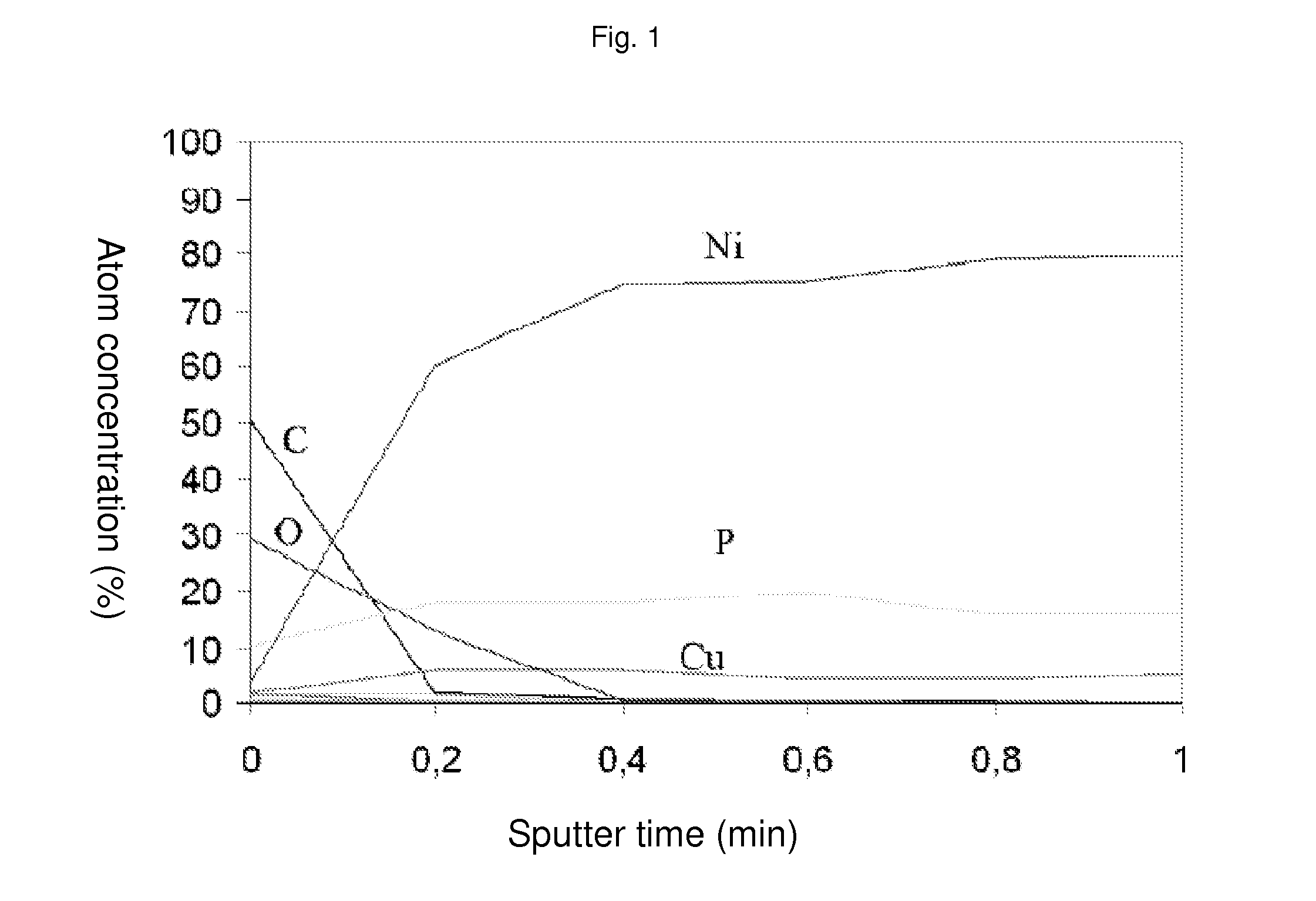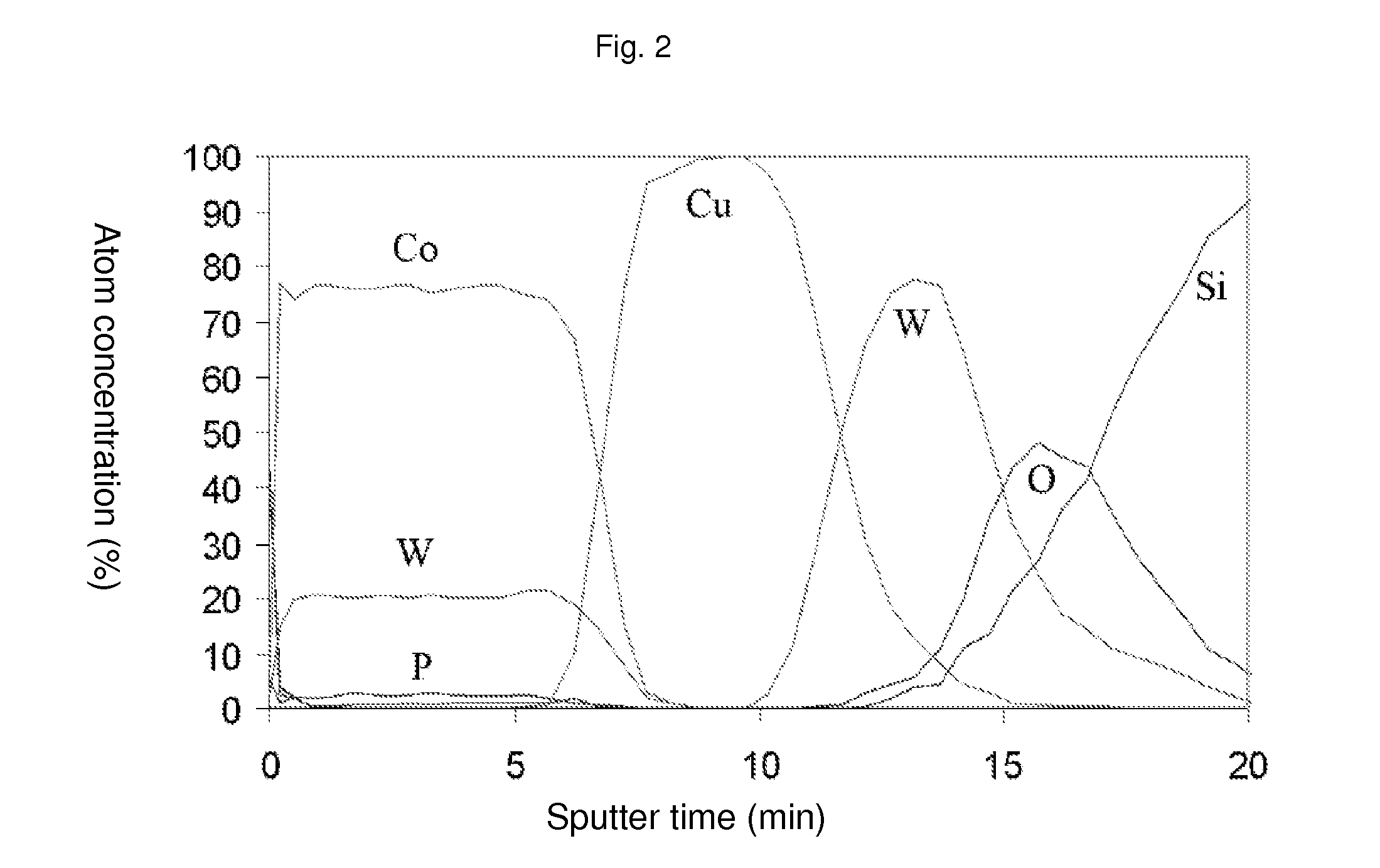Wire bondable surface for microelectronic devices
- Summary
- Abstract
- Description
- Claims
- Application Information
AI Technical Summary
Benefits of technology
Problems solved by technology
Method used
Image
Examples
example 2
[0055]A Co—W—P alloy was deposited by electroplating onto contact pads made of copper. The thickness of said Co—W—P alloy was 0.2 μm and the phosphorous concentration was 3 wt.-% after deposition.
[0056]Thermal annealing and XPS measurement were performed as described in Example 1.
[0057]A negligible amount of copper was detected in the Co—W—P alloy layer after thermal annealing.
[0058]Hence, a thin Co—W—P alloy layer does prevent copper diffusion at an elevated temperature.
example 3
[0059]A Co—W—P alloy was deposited by electroplating onto contact pads made of copper. The thickness of said Co—W—P alloy was 0.2 μm and the phosphorous concentration was 3 wt.-% after deposition.
[0060]Next, an intermediate layer of pure palladium (thickness: 0.3 μm) and thereafter a top layer of gold (thickness: 0.03 μm) was deposited onto the palladium layer.
[0061]The wire bonding properties of the final metal and metal alloy layer sequence consisting of a copper contact pad, a Co—W—P alloy layer, a palladium layer having a palladium content of more than 99 wt.-% and a gold layer were determined using the DVS Standard No 2811.
[0062]A TS bonder model Delvotec 5410 and a gold wires Au-AH3 (Hereaus) and bonding parameters US power 75% (graduation marks (not calibrated marks), specific parameter for given TS bonder); 25 gf bonding force and 25 ms bonding time were used. Measurements were done for 30 stud bumps per pad size.
[0063]The following parameters were determined during the bond...
PUM
 Login to View More
Login to View More Abstract
Description
Claims
Application Information
 Login to View More
Login to View More - R&D
- Intellectual Property
- Life Sciences
- Materials
- Tech Scout
- Unparalleled Data Quality
- Higher Quality Content
- 60% Fewer Hallucinations
Browse by: Latest US Patents, China's latest patents, Technical Efficacy Thesaurus, Application Domain, Technology Topic, Popular Technical Reports.
© 2025 PatSnap. All rights reserved.Legal|Privacy policy|Modern Slavery Act Transparency Statement|Sitemap|About US| Contact US: help@patsnap.com


